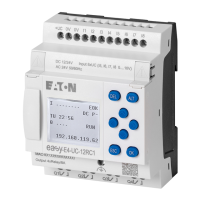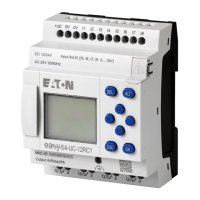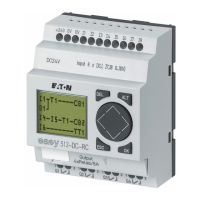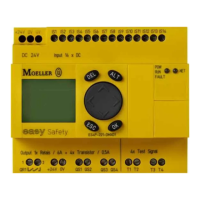10. easyE4 communication Connection to other devices
10.11 Secure communication with certificates
makes it possible to avoid this recurring confirmation prompt while still making sure
to establish secure communications.
10.11.2 When is the Eaton easyE4 root certificate needed?
One example is when easySoft 8 wants to establish communications with the
easyE4's programming interface.
The Eaton easyE4 root certificate is also requested the moment a browser wants to
access the easyE4 base device's web server.
The same applies when establishing a connection for the JSON API. If the certificate
is not valid, a connection will not be established.
What communications are being
used for
Ethernet interface with the following
higher protocols
Certificate
request
easyE4 programming interface
easyProtocol V1
easyProtocol V2 SSL/TLS
easyProtocol V2 (not encrypted)
–
√
–
easyE4 as Web server
http
https
–
√
JSON API
http
https
–
√
The Eaton easyE4 root certificate is not requested for the following types of com-
munication:
l
Modbus TCP connection
l
NET
l
easyProtocol V1
l
easyProtocol V2 without TLS (not encrypted)
If the easyE4 base device easyProtocol is in its state of delivery, easyProtocol V1 can
be used to communicate through port 10001.
Make sure,
especially when running easySoft 8 on Windows 7,
that the easyProtocol V1 allowed (not encrypted, TCP port
10001) option under the Project Settings/"Ethernet" tab is
enabled before downloading the first project.
Please note that the aforementioned state of delivery will
cease to exist the moment the first project is loaded onto the
easyE4 base device.
10.11.3 What should I do if I am unable to establish a connection due to a certificate error?
There are several potential sources of error that can result in a secure connection
not being established even if the Eaton easyE4 root certificate appears to have been
installed correctly.
easyE402/24 MN050009ENEaton.com
695

